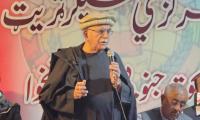ISLAMABAD: Pakistan’s economic landscape is marked by an incredibly worrying trend: de-industrialisation, a phenomenon where industrial capacity is diminishing, leading to reduced manufacturing output and employment in the economy.
Since the second quarter of FY24 industrial power consumption, an important indicator of manufacturing activity, has been on a persistent decline. Central to this issue are continuously increasing power tariffs for industrial consumers—hovering at around 17 cents/kWh at present and expected to keep increasing—that have become a hallmark of the country’s energy sector.
High power tariffs in Pakistan have placed an enormous burden on energy-intensive industrial sectors that are the backbone of the economy. The cost of electricity directly influences production costs, competitiveness, and profitability. When energy prices soar, the immediate effect is an increase in operational costs for manufacturers. For most industries, this rise in cost cannot be fully passed on to consumers without risking a loss of market share to cheaper imported goods. Consequently, margins are squeezed, making it difficult for local industries to compete both domestically and internationally.
Moreover, high energy costs have a stifling effect on investment in the industrial sector. Prospective investors, both local and foreign, often cite energy costs as a significant deterrent to investment in Pakistan. The uncertainty surrounding energy prices, compounded by frequent changes in tariffs, fuel price adjustments, and quarterly tariff adjustments, exacerbates this reluctance. This uncertainty discourages long-term planning and capital investment in new industrial ventures or the expansion of existing ones, leading to a slow but steady de-industrialisation. The roots of Pakistan’s high power tariffs are deep and multifaceted, involving both structural inefficiencies within the energy sector and broader economic challenges. The country’s energy mix is heavily reliant on imported fossil fuels, making it vulnerable to global price fluctuations. Additionally, transmission and distribution losses, along with theft, further exacerbate the cost of electricity. These losses are, by design, always passed on to consumers in the form of higher tariffs.
KP CM Gandapur accused federal government of adopting an unfair attitude towards KP and vowed not to compromise on...
Blinken raised the matter during five-and-a-half hours of talks with China’s top diplomat Wang Yi in Beijing
The chief minister directed the sports minister to review the prospects of cooperation with the delegation
According to Geo News, the Sunni Ittehad Council is second in the National Assembly and PPP occupies the third place
PM has directed Secretary Cabinet Division to take necessary foolproof measures to prevent leakage of agenda and...
The meeting concluded with the agreement on the next steps for commencement of the process of digitalisation of...







